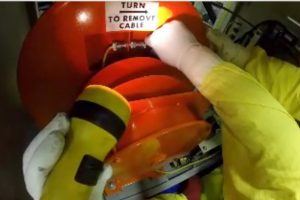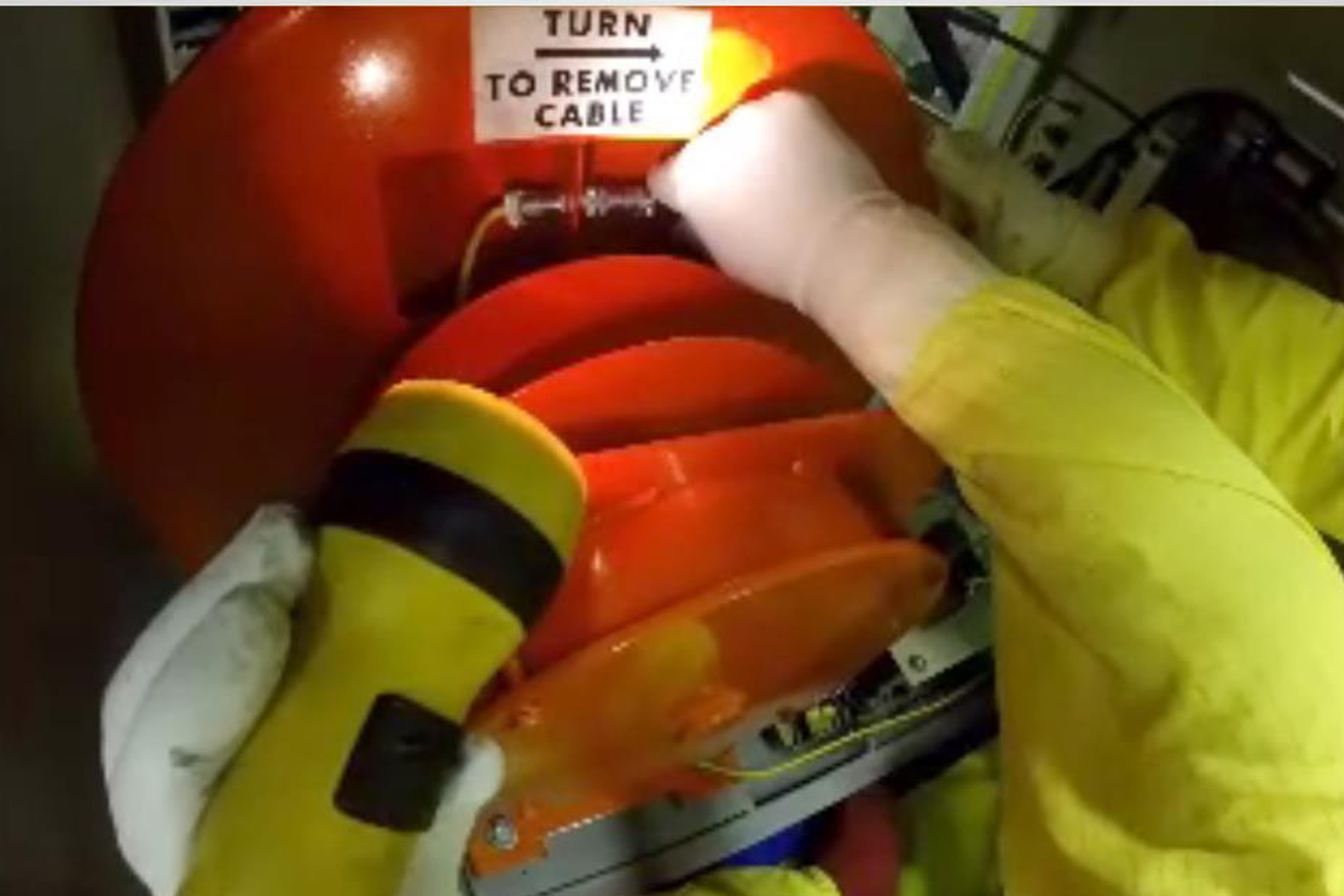The last time USA fleet member PPL Susquehanna changed out Unit 2’s Traversing In-Core Probe (TIP) was in 2002. In 2002, nobody was on Facebook, no one had an iPhone and no one watched a single YouTube video – because none of those things had been invented yet.
But for all of our technological advances, nothing tops good old preparation, teamwork and experience for getting a job done right. Team Susquehanna determined during an outage last year that the Unit 2 TIP had depleted its fuel. And a TIP change-out is a “high-risk radiological evolution.”
“From an Equipment Reliability perspective, it’s a good thing to do; from a radiological safety perspective, obviously it poses a few challenges,” said Radiation Protection Manager Shannon Peterkin. Addressing those challenges started with revising the I&C TIP Replacement Procedure. To help, Team Susquehanna looked around for someone who had done the work in 2002 and found just one still working in Maintenance – Instrumentation and Control (I&C) Technician Glenn Bieber.
“Glenn was key to revising the procedure,” says I&C Maintenance Production Foreman Les Taylor. “He was key to building a well-planned schedule and the responsible individual on the job.”
“We have other guys who were around when we last performed this work, but they have moved on to other positions,” said Glenn, who is quick to share credit for the expertise he brought to the work. “And now we have four more guys who picked up their qualifications in October and were part of the team doing the work.”
The teamwork necessary to complete the work came from across the station, including Effluents, RP – Ops, RP – ALARA, Operations and Training. Solid planning meant windows were built into the work schedule for Operations to get clearances hung before moving on to the next phase.
With months of training and preparation already on the line, work crews stayed committed to completing one day’s work so they wouldn’t push work onto the next part of the schedule and threaten its overall timely completion. Communication, especially from RP, also was important. Les says “we had constant communications with RP and always knew when the next task would be supported.”
“A lot has changed since 2002,” Glenn said. “RP was super-conservative this time and had a lot more input throughout.”
And then there were the Go Pro® cameras worn by I&C Techs to capture the work for future training purposes. “Mounting the Go Pros so they would capture the actual work that was being done was a challenge that we had to figure out,” Glenn says. But the footage captured will eventually help Team Susquehanna train the next work crew to do the job again.
In the end, the work was completed on time and under dose, thanks the planning, teamwork and behaviors that made it a success.
“All the guys I worked with dug in and got the work done,” Glenn says. “We had a plan laid out on what we wanted to do each day. We followed that and it worked out pretty well.”

Images generated by Go-Pro cameras worn by I & C technicians captured the work done for future training purposes. Here, one of the I & C techs is seen installing the new TIP detector into the drive mechanism.


